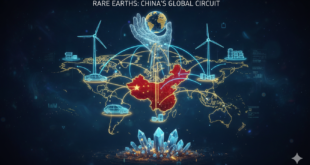Scientists from Australia have produced the largest flexible, plastic solar cells, having 30 centimetre-wide panels and according to them the technology is close to commercialization stage.
The researchers modified the commercial printers, filled them with semiconducting inks, to print the cells straight onto paper-thin flexible plastic or steel. With the ability to print at speeds of up to ten metres per minute, they can produce one cell every two seconds.The Victorian Organic Solar Cell Consortium behind the project comprises scientists from the CSIRO and the Melbourne and Monash universities.
According to the researchers, this has opened up a wide range of applications including powering laptops, iPads and mobile phones. “Eventually we see these being laminated to windows that line skyscrapers”. By printing directly to materials like steel, would allow embedding cells onto roofing materials. The new printer, is worth A$200,000, however, in the future the cost is expected to come down and then people shall be able to manufacture solar cells on demand, in a house or in a workplace.
In general the organic photovoltaic cells have low efficiency in comparison with inorganic photovoltaic devices and temperature variations can also lead to device degradation and decreased performance over time. At the moment, the 30 centimeter-wide panels generate between 10 to 50 watts of power per square metre and showing stable outdoor performance for more than six months. Researchers are working to improve the efficiency, and extend the lifetime to several years. The team is also working on a solar spray coating.
 International Defense Security & Technology Your trusted Source for News, Research and Analysis
International Defense Security & Technology Your trusted Source for News, Research and Analysis

